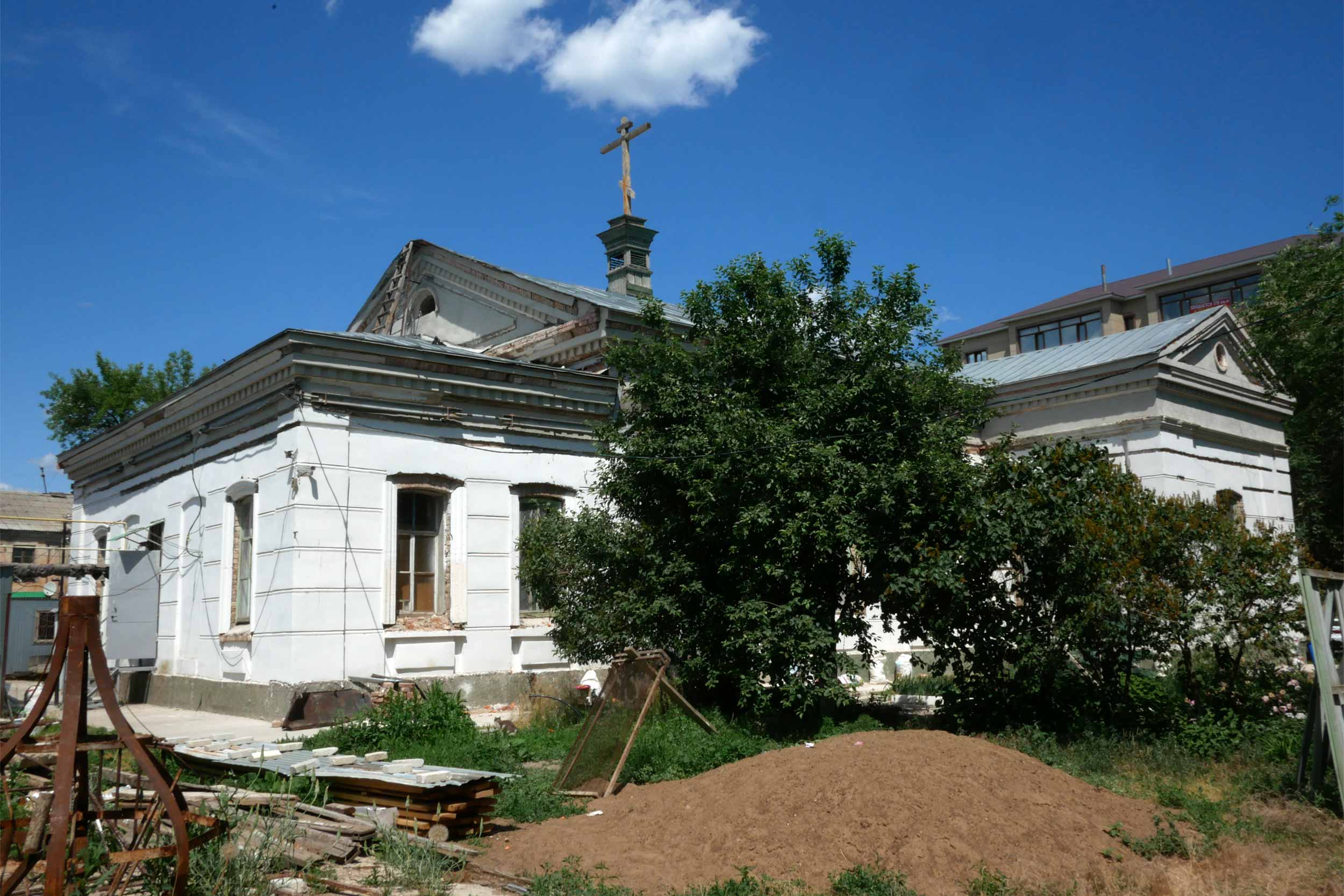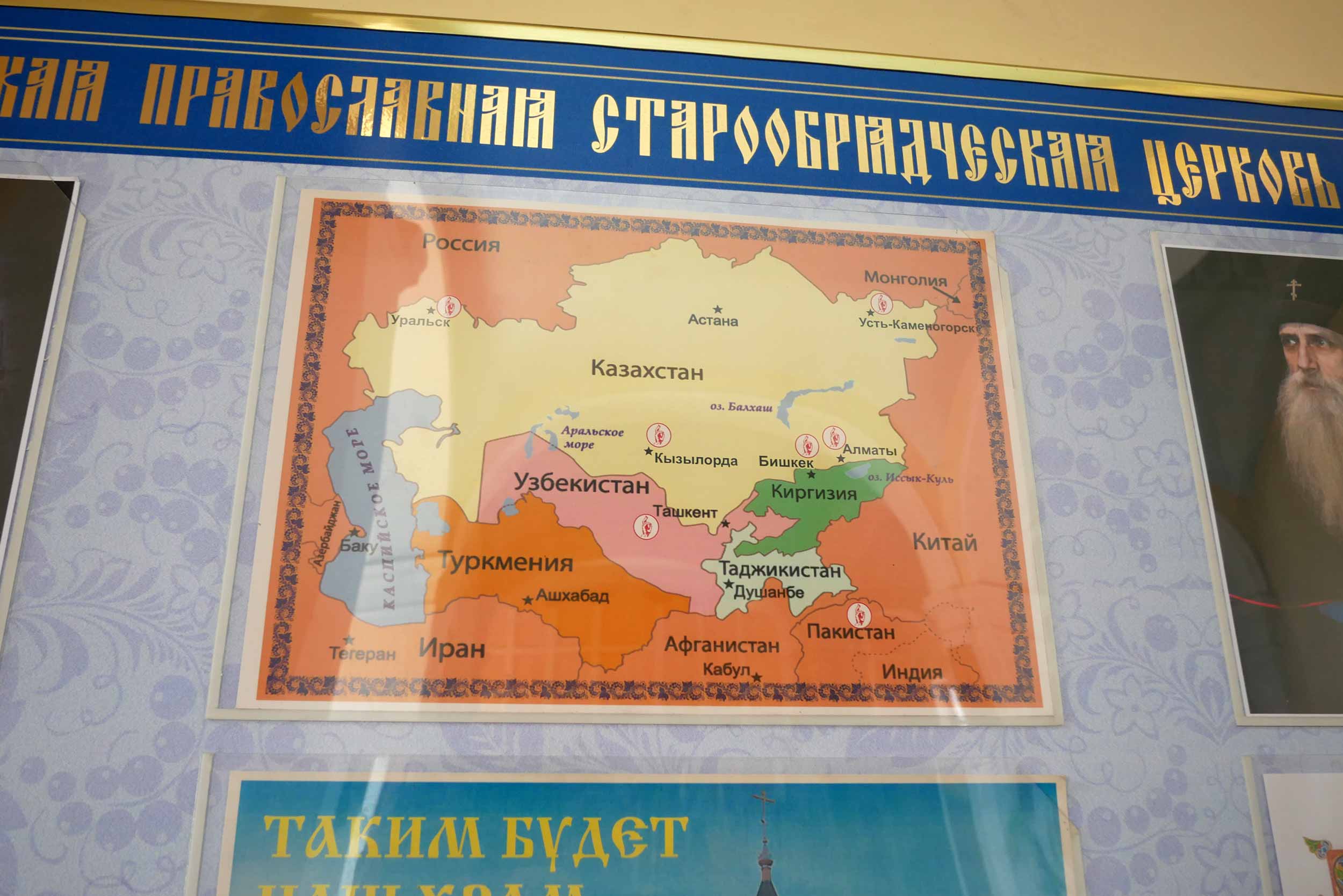Kazakstan’s Shrinking Community of Old Believers
A young priest keeps ancient rituals alive in his tiny parish.
In Uralsk, a city in north-west Kazakstan, a community of 50 or so Old Believers of the Russian Orthodox Church holds on to their beliefs, despite the challenges.
“We are grateful to the authorities for not oppressing us and leaving us alone,” Father Konstantin, the country’s only Old Believers priest, told IWPR. Given the sect’s turbulent history, his gratitude is understandable.
The cornerstone of the community’ beliefs is observance of the rituals of the Russian Orthodox Church before the reforms of Patriarch Nikon of Moscow, which aligned the practices of the Russian Orthodox Church and the Greek Orthodox Churches between 1652 and 1666.
“Without any explanation or discussion, they decided to destroy all the customs that had developed in Russia since the 10th century and align them with the Greek Orthodox Church,” the 30-year-old priest explained. “The Tsar was a great lover of Greece and Greek culture and decided to conduct an experiment [and] said, ‘Our Russian saints were illiterate, undereducated, so we should not rely on their experience. We will do it from scratch.”

New versions of the Bible, the New Testament and prayer books were then translated into Russian. Prayers were altered, services were changed and shortened, and the offices of sacraments reduced.
“Of course, faithful people and those who were not indifferent to the church made a stand against it. Since then, strict measures were taken towards the Old Believers. They were executed for their faith, their property was seized, and they were sent into exile,” the priest said.
The community is believed to number about 1,500 in the east of the country, where the majority live, but there are no reliable statistics. Most are tiny congregations scattered around settlements that Old Believers founded as they fled persecution.
The origins of the church in Uralsk reflect this history.
“There is a legend that after the Ikan battle near Turkestan, the Yaik Cossacks, [who were Old Believers], asked for this land plot from the authorities, but apparently did not say what it was for,” Konstantin said, referring to the 1864 battle between the Uralsk Cossack regiment of Captain Serov and Kokand army of Alimkul.
Named for the intercession of the Holy Virgin, the church was built in 1888, at a time when persecution by authorities was relatively mild. To circumvent a law that prohibited Old Believers from building temples or churches, they constructed a square box with a double-pitch roof and people began to pray there.
However, the authorities soon learned that church services were being performed and closed and sealed the building the following year.

Things looked brighter in 1905, when Tsar Nicholas II issued a decree allowing all religions to pray publicly and build churches. Old Believers in Uralsk collected signatures to ask the tsar to let them re-open the church, and he agreed.
In 1907, of Uralsk the building was consecrated and Old Believers began to hold services there. But in 1934, under the Soviet Union, an Old Believers priest was arrested, the church closed down and the building handed over the ministry of defence.
During the Second World War, it was used as a hospital, and then it housed a military communications unit until 1985, when it was used it as a club to host movies and discos.
“The building was only returned to the Old Believers in 1993,” Konstantin continued. “It was completely devastated: the walls were cracked and had collapsed in some places, and there was no electrical wiring or heating.”
Konstantin said that he first went to church at the age of 20.
“I saw the church of Old Believers in Orenburg [in south-west Russia] and entered it just for fun. I did not understand anything about it, and I did not have any religious experience. In my family, only my grandmother was a worshipper. She asked me to buy candles from time to time.”
Beginning as a parishioner in the church of Old Believers in Orenburg, Konstantin was promoted to the position of deacon. Two years later, he and his family were sent to Uralsk, where he became the church’s first permanent priest since the arrest of the previous incumbent in 1934.
“In 80 years, only temporary priests came here; they would come from other towns for a short period - one week, one month - to give communion and to hear confession.”

A PRECARIOUS FUTURE
“Our state-religion relationship has developed positively,” Aigerim Temirbaeva, professor of religious studies at Al Farabi Kazak National University told IWPR. “The Republic of Kazakstan keeps historic traditions and opens new sectors for interfaith dialogue development.”.
Still, survival is far from easy. The community has asked both local and central government for financial help to repair the church, but without success, despite requests from the department in charge of the protection of historical monuments for the church’s upkeep.
Instead, the church has relied on contributions from parishioners, who pay ten per cent of their income to the church as tithes. That has raised enough funds to carry out repairs inside the building, but the roof and foundation are still in need of attention.
“It has taken us 30 years to have what we could have had in three,” Konstantin said.
Moreover, church attendance is dwindling. When IWPR visited on June 4 there were only 15 congregants attending the service for the Orthodox Trinity.
The priest pointed to the sect’s history of oppression.
“We lived underground, so to speak. In the 1960s, a priest came from Novosibirsk. There were 60-70 Old Believers in Uralsk back then who could hardly fit into the yard of a private house. Now there are fewer people,” the priest said.
![Olga Leontyevna is one of the 50 or so Old Believers in Uralsk. “I am an Old Believer, [like] my great-grandfathers and grandfathers. I have been coming to this temple for over 30 years. This is the very first faith where Orthodoxy began. We have more prayers and all our rules are stricter,” she said. © Talgat Umarov](/sites/default/files/images/story/kazakstan-old-believers-3-Talgat-Umanov.jpg)
Olga Leontyevna is one of them.
“I am an Old believer, [like] my great-grandfathers and grandfathers. I have been coming to this temple for over 30 years. This is the very first faith where Orthodoxy began. We have more prayers and all our rules are stricter,” Leontyevna told IWPR.
Nevertheless, the Old Believers of Uralsk have never had conflicts with representatives of other religions, including Muslims, with whom they share some surprising similarities.
“Muslims respect us. They watch us and say, ‘Your rug and beads are like ours.’ This is our ancient tradition. Our rugs are called ‘small prayer rugs’: we put them on the floor when we make prostrations. They are used to keep our hands clean. Our beads are similar to those of Muslims, we tell beads and say prayers.”
Indeed, during the Great Canon service, parishioners perform over 1,000 prostrations, similar to the Muslim prayer style.
Yet despite the challenges, Konstantin is not going to leave Uralsk.
“The priest has a purpose to try to save everyone who comes to the church,” he said.
This publication was prepared under the "Amplify, Verify, Engage (AVE) Project" implemented with the financial support of the Ministry of Foreign Affairs, Norway.
